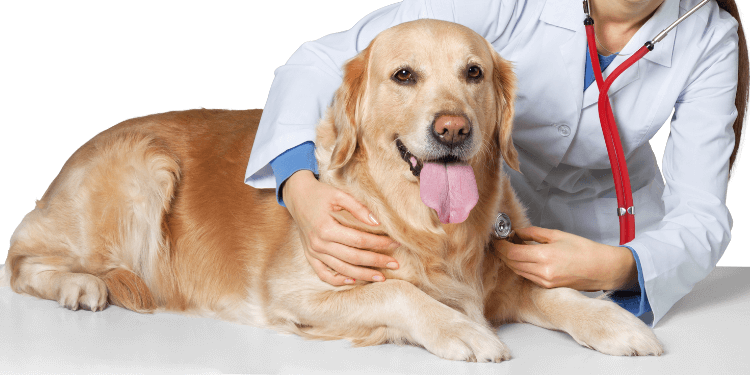Shifting the Veterinary Experience from ‘Terrifying’ to ‘No Big Deal’
Doctor visits are stressful for a lot of us. As humans, we understand that health is a priority, and a few minutes of uncomfortableness today only increases our odds of better health tomorrow. Unfortunately, dogs do not share our logic.
Fear is Powerful
For dogs, just like humans, fear is a strong emotion that is not only mental but a physical response to a situation. When stressed a dog’s body releases the hormones cortisol and adrenaline which cause the fight or flight response. Though useful in some situations, these stress hormones released during non-life-threatening times do more harm than good. When any species lives in a prolonged state of high alert, it disrupts their natural processes and increases the risk of chronic health conditions, such as joint issues, which down the road could lead to stressful surgeries, overnight hospital stays, and rehab.
Typical external stress responses in dogs include:
- Panting
- Drooling
- Shyness
- Submissive urination
- Aggressive behavior
Typical internal stress responses in dogs include:
- Increasing a dog’s blood pressure
- Increasing a dog’s blood sugar
- Weakening their immune system
Since we know fear is so powerful, we need to know what to do about it for our dogs.
Tips for making your next vet visit less stressful:
Encourage Comfort Through Familiarity
Depending on the dog, new places are either exciting or scary. For the apprehensive dog visiting the vet more than once, a year will help them become familiar with the doctor, office, staff, and the unique noises, sights, and smells associated with each of them
Familiarity brings comfort, and it comes from repetition or repeated exposure. Of course, you’ll want to run this by your vet’s office first, but you can start by adding veterinarian visits to your list of errands.
- Take your pup to say hello to whoever is available in the office at regular intervals. When they are busy, the two of you can hang out in the waiting room for five minutes. This allows your pup time to acclimate.
Don’t forget to point out the positives,
- If there are treats at the front desk, be sure to grab one every time.
- With permission, allow a quick hello to other friendly, non-injured animals that are waiting. And be sure your pup gets plenty of attention from you or someone else before leaving.
Be mindful that your veterinarian’s office is a place of business and only stays a few minutes. That’s often all it takes to shift a dog’s perspective. With a little luck and perseverance, your pup will soon see these visits as opportunities to spend time with friends and munch on some tasty treats.
Create Fun Associations
Ask yourself what your dog truly enjoys doing and then find ways to incorporate that into their exam days.
Does your dog have a favorite park or trail? Enjoy a long walk at this location, either right before or right after your visit. This will help release some nervous energy and still feel like a small celebration for two.
Is your dog a shopper that loves picking out new items at the pet store? Stop in before and bring out their newly chosen toy during the session or go after as a reward for being so brave. Both bring something to look forward to and add a positive tint to the entire day.
Doggy daycare fan? Try to be strategic when scheduling. Timing is everything because we want our dogs to associate a good time with the doctor, so both events need to happen quite close together. Much like the new treat or bone idea, you can coordinate a day of play with your vet visits to create a strong link between the two.
Stay Calm and Arrive Prepared
Dog’s pick up on our energy. If you are stressed and rushing your dog will pick up on it. So leave plenty of time for a pleasant walk and a non-hurried travel experience.
Another tip is to listen to soothing music during the car rides to and from the appointment.
Don’t be surprised and prepare ahead of time. Call your vet to determine what your dog can expect and ask what you can do to make things less stressful.
If you are worried about your pup having blood drawn, it may be better for you both if you aren’t in the room when it happens. Having a plan will get your dog in and out with more speed and less trauma.
Expecting your dog will need to stay overnight? Pack one or two items they find comforting—a favorite toy, blanket, or even a worn shirt that smells like their favorite person. The smallest things often make the biggest difference.
A fearful canine may not understand the importance of good healthcare or how harmful their stress levels can be – that’s why we are here. It’s a commitment, but a little consistency, planning, and a bit of fun will help make a lifetime of excellent health a bit easier to achieve.











